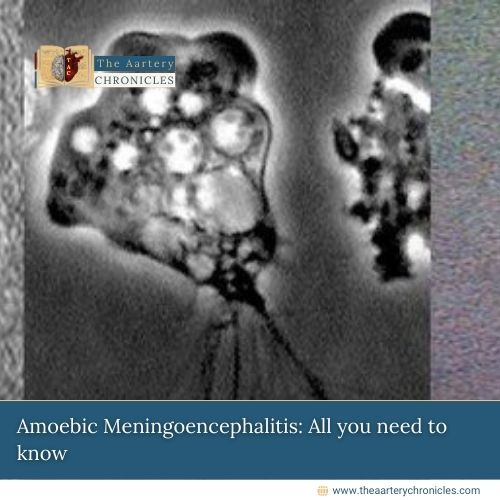

The Gut-Diabetes Link: Exploring the Influence of Gut Microbiota on Diabetes
What is Diabetes?
The World Health Organization (WHO) defines diabetes as a chronic metabolic condition marked by elevated blood sugar levels, which can after that result in significant consequences. [1]
As of 2019, more than 460 million adults worldwide have been diagnosed with diabetes, which is projected to reach 700 million by 2045.
The primary hormone at play is insulin, which controls how much blood glucose is absorbed by organs. In diabetes, insulin is either shown to be nonfunctional, destroyed, or produced insufficiently. The malfunction of insulin regulation results in inadequate glucose uptake by cells, leading to high blood sugar levels.
What is Gut Microbiota?
A group of microbes called the gut microbiota live in the gastrointestinal tract (GIT), including bacteria, fungi, and viruses. Our diet majorly influences the composition and diversity of gut bacteria. Beginning at birth, the gut microbiota continues to evolve until a child is three years old. The types and abundance of microbes in the gut can change over time in response to various factors, including diet, environment, and age. The composition of gut bacteria can vary throughout the gastrointestinal tract, with the colon being the region where they are most prevalent. Humans and gut microbiota work in a symbiotic relationship. The gut microbiota helps with tasks like breaking down complex carbohydrates and producing certain vitamins, while humans provide a stable environment and nutrients for the microorganisms.
The collaborative MetaHit project (Metagenomics of the Human Intestinal Tract) has given us a better insight into the types of microbiota species residing in our gut. According to the findings, a particular type of bacteria called “Firmicutes” made up the majority of the composition, with another phylum called Bacteroidetes. [2]
The diverse gut microbiota is generally considered a sign of good gut health. It’s not just the presence of specific bacterial groups but also the overall diversity of the microbiota that plays a role in maintaining health and preventing certain diseases. The findings from such research projects have had a substantial impact on our understanding of the gut microbiota’s role in health and disease. They have shed light on how variations in the gut microbiota may be associated with various health conditions, including obesity, metabolic disorders, and gastrointestinal diseases.

What fuels the gut microbiota?
The answer would be fibres. While human enzymes cannot break down fibres, they benefit the microbiota. The fibres reach the large intestine (colon) undigested, where they become a source of nutrition for the gut microbiota. Microbiota ferment fibres, and as a result, they can create short-chain fatty acids (SCFA) including acetate, propionate, and butyrate. These SCFAs have several important functions in the body which may include:
- Improve glucose metabolism: It helps improve insulin sensitivity, thus regulating blood sugar levels.
- Reduce the buildup of fat in adipose tissue which may help in better weight management.
- Preserve the intestinal epithelial barrier’s integrity: SCFAs, particularly butyrate, play a role in preserving the integrity of the intestinal epithelial barrier.
- Promote the metabolism of liver glycogen: It assists in maintaining stable blood sugar levels. [3]
How can Gut Microbiota dysbiosis cause Diabetes?
The gut microbiota interacts closely with the intestinal epithelial barrier, which includes components like mucus, enterocytes (intestinal cells), and tight junction proteins (e.g., zonula occludens, cingulin, occludin, and claudin 2). These components collectively help maintain the integrity of the gut barrier.
Dysbiosis refers to an imbalance in the composition of the gut microbiota which can lead to changes in the gut barrier. Factors such as diet, environment, medications, and lifestyle can contribute to dysbiosis.
This dysbiosis can compromise the integrity of tight junctions, making the intestinal epithelium more permeable. This condition is often referred to as “leaky gut” or increased intestinal permeability. Consequently, it allows microbial components from bacteria to enter the bloodstream. This process is termed Endotoxemia. Studies have revealed that these bacteria’s lipopolysaccharides (LPS) are thought to trigger an inflammatory response in the bloodstream and are linked to an array of autoimmune and metabolic diseases including Diabetes. [3, 4]
It has also been shown that blood samples from patients with chronic diseases contain bacterial DNA, which causes systemic inflammation. Studies have shown that different types of bacterial compositions are associated with various diabetic complications. This suggests a close link between the gut microbiota and both the development of diabetes and its related complications. [5]
How does the gut microbiome affect Type 1 Diabetes?
Type 1 diabetes (T1D) is an autoimmune disorder in which the Langerhans beta cells of the pancreas are destroyed, resulting in decreased or absent insulin production and leading to hyperglycemia.
- Data from bioinformatics indicates that few microorganisms can produce an insulin-like peptide that can activate the immune system and lead to a cross-reactive immune response, where the immune system mistakenly attacks both the microbial molecules and the body’s own insulin-producing cells (Autoimmunity).
Studies have found differences in the gut microbial composition of individuals with T1D and those without the condition. [6]
- Children with autoantibody positivity (a sign of increased risk for T1D) have been observed to have different microbial profiles. They may have higher levels of certain bacteria, such as Bacteroides, and lower levels of microbes that produce short-chain fatty acids (SCFAs).
- Before the onset of T1D, some children had larger concentrations of Bifidobacterium species and lower concentrations of Streptococcus thermophilus and Lactococcus lactis.
The differences in microbial composition suggest a potential link between gut bacteria and the development of T1D.
How does the gut microbiome affect Type 2 Diabetes?
Type 2 diabetes is mainly characterized by insulin resistance and metabolic disturbances.
- Researchers have identified 43 distinct bacterial taxa (types of bacteria) that may be associated with T2D. This suggests that the composition of the gut microbiota differs in individuals with T2D compared to those without the condition.
- Specific bacterial taxa, such as Acidaminococcales, Bacteroides plebius, and Phascolarctobacterium sp CAG207 have been suggested as potential biomarkers for detecting T2D.
- Studies have found correlations between certain bacterial species and markers of blood sugar control. While Clostridium species exhibited a negative correlation with HbA1c, Lactobacillus species showed a positive correlation.
- Increased levels of LPS in the bloodstream can lead to inflammation and insulin resistance, contributing to T2D.[3] Metformin, a commonly used medication for T2D, has been found to have a positive impact on the gut microbiota. It can potentially modify the composition of the gut microbiome in a way that enhances the drug’s effectiveness. [7]

Expert Comments:
The Association Between Gut Microbiota and Diabetes Mellitus
Prof. Ramaz Kurashvili, MD, PhD, National Center for Diabetes Research, Expert in Endocrinology of the MH of Georgia
Diabetes is a fast-growing health problem globally. There is a large number of already known and emerging risk factors, both reversible and irreversible, that cause the development of type 2 and 1 diabetes. Lately, serious attention has been paid to the pathologic association of human gut microbiota and the risk of the development of diabetes in children, adolescents and adults.
Scientists were studying why some people develop diabetes and if there is any relation between microbiota, its condition and composition. Results of the studies published lately have shown that not only pathologic changes in microbiota but its composition influence the risk of diabetes development, Higher levels of some bacteria (bacterium Coprococcus) are associated with increased insulin sensitivity and may contribute to the development of diabetes, while others (bacterium Flavonifractor) tend to decrease the level of insulin sensitivity.
A better understanding of what role gut microbiota play in diabetes could lead to the development of new therapeutic strategies with broader use of probiotics, that will be aimed at the prevention and control of pre-diabetes and diabetes.
Gut Microbiota and Future Methods for the Prevention and Treatment of Diabetes
Elena Shelestova, CDE, RDN, DE, National Center for Diabetes Research
Diabetes is an emerging problem in global health care. Unhealthy eating habits and excessive and uncontrolled use of some over-the-counter drugs and antibiotics have resulted in massive disturbances in the function and composition of human gut microbiota, which appears to have a strong association with the development of the whole range of non-communicable diseases including type 1 and type 2 diabetes. Investigations have shown that the microbiota of healthy people differs from that of people with glucose metabolism disturbances. They are studying the role of the gut microbiota in diabetes could lead to the development of integrated strategies using probiotics to prevent and treat these metabolic disorders the relationship between microbiota and type 1 and type 2 diabetes and looking for alternative treatments and prevention methods for diabetes mellitus.
Conclusion
Diabetes is a chronic metabolic disorder that affects a significant portion of the global population and continues to afflict more and more people every day. While there is no complete cure for diabetes, there are management strategies to control the condition and improve quality of life. The gut microbiota has gained recognition as a critical factor in the development and management of chronic diseases like diabetes. Emerging research suggests that the composition and activity of the gut microbiome can influence diabetes risk and outcomes. Diabetes management guidelines emphasize the importance of lifestyle modifications. These include adopting a well-balanced diet, engaging in regular physical activity, consuming fibre-rich foods like fruits and vegetables, and considering the inclusion of probiotics in the diet. [8]
The ongoing research into the gut microbiome and diabetes offers hope for improved management and a better understanding of the condition. The future holds the promise that Diabetic issues can be effectively managed and controlled by healing the gut.
Diabetes. (n.d.). Who. int.. Available from https://www.who.int/health-topics/diabetes
- MetaHIT. (2012, March 25). Gut Microbiota for Health; European Society of Neurogastroenterology and Motility. https://www.gutmicrobiotaforhealth.com/metahit/
- Zhou, Z., Sun, B., Yu, D., & Zhu, C. (2022). Gut Microbiota: An important player in type 2 diabetes mellitus. Frontiers in Cellular and Infection Microbiology, 12, 834485. https://doi.org/10.3389/fcimb.2022.834485
- Xu, Q., Ni, J.-J., Han, B.-X., Yan, S.-S., Wei, X.-T., Feng, G.-J., Zhang, H., Zhang, L., Li, B., & Pei, Y.-F. (2021). The causal relationship between gut Microbiota and autoimmune diseases: A two-sample Mendelian randomization study. Frontiers in Immunology, 12, 746998. https://doi.org/10.3389/fimmu.2021.746998
- Iatcu, C. O., Steen, A., & Covasa, M. (2021). Gut Microbiota and complications of type-2 diabetes. Nutrients, 14(1), 166. https://doi.org/10.3390/nu14010166
- Del Chierico, F., Rapini, N., Deodati, A., Matteoli, M. C., Cianfarani, S., & Putignani, L. (2022). Pathophysiology of type 1 diabetes and gut Microbiota role. International Journal of Molecular Sciences, 23(23), 14650. https://doi.org/10.3390/ijms232314650
- Liu, W., Luo, Z., Zhou, J., & Sun, B. (2022). Gut Microbiota and antidiabetic drugs: Perspectives of personalized treatment in type 2 diabetes mellitus. Frontiers in Cellular and Infection Microbiology, 12, 853771. https://doi.org/10.3389/fcimb.2022.853771
- Li, H.-Y., Zhou, D.-D., Gan, R.-Y., Huang, S.-Y., Zhao, C.-N., Shang, A., Xu, X.-Y., & Li, H.-B. (2021). Effects and mechanisms of probiotics, prebiotics, synbiotics, and postbiotics on metabolic diseases targeting gut Microbiota: A narrative review. Nutrients, 13(9), 3211. https://doi.org/10.3390/nu13093211

Author: Lalitha Lavanya








